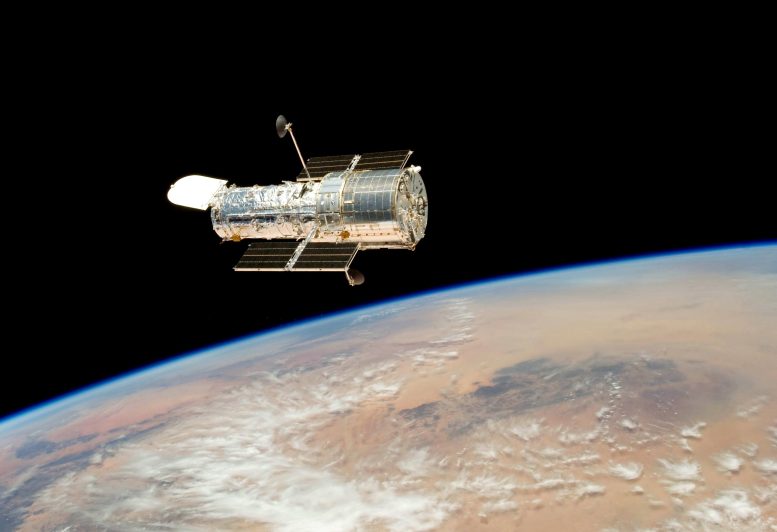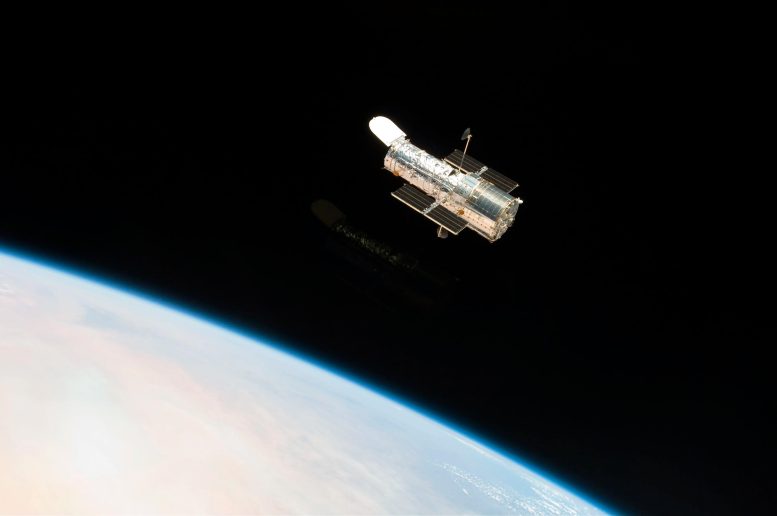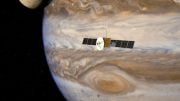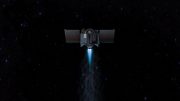
Hubble drifts over Earth after its release on May 19, 2009 by the crew of the Space Shuttle Atlantis. The crew had performed all planned tasks over the course of five spacewalks, making the Servicing Mission 4 (SM4), the fifth astronaut visit to the Hubble Space Telescope, an unqualified success. Credit: NASA
Following a gyroscope issue, NASA has successfully resumed science operations of the Hubble Space Telescope, with systems functioning optimally.
NASA restored the agency’s Hubble Space Telescope to science operations on December 8. The telescope had paused science observations on November 23 due to an issue with one of its gyros. The spacecraft is in good health and once again operating using all three of its gyros.
NASA decided to restore the agency’s Hubble Space Telescope to science operations following a series of tests to gain insight into the gyro performance that caused the spacecraft to pause science operations.
After analyzing the data, the team determined science operations could resume under three-gyro control. Based on the performance observed during the tests, the team has decided to operate the gyros in a higher-precision mode during science observations. Hubble’s instruments and the observatory itself remain stable and in good health.
Hubble’s two main cameras, Wide Field Camera 3 and Advanced Camera for Surveys, resumed science observations on December 8. The team is planning to restore operations to the Cosmic Origins Spectrograph and Space Telescope Imaging Spectrograph later this month.
About the Hubble Space Telescope
Launched in 1990, the Hubble Space Telescope is a marvel of modern astronomy, orbiting Earth to capture unprecedented views of the universe. Unlike ground-based telescopes, Hubble operates above the distortion of Earth’s atmosphere, delivering crystal-clear images of distant galaxies, nebulae, and other celestial phenomena.
Its discoveries have revolutionized our understanding of the universe, from revealing the accelerated expansion of the universe to capturing the most detailed views of planets in our solar system. Hubble’s longevity and adaptability have made it one of the most significant instruments in the history of astronomy, continuously pushing the frontiers of our cosmic knowledge.










Be the first to comment on "Hubble’s Heroic Comeback: NASA Reignites Science Operations After Gyro Challenges"